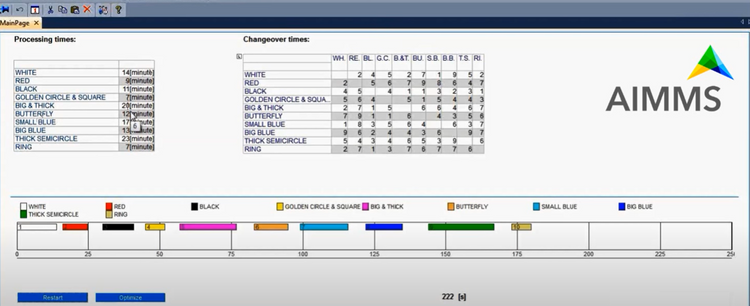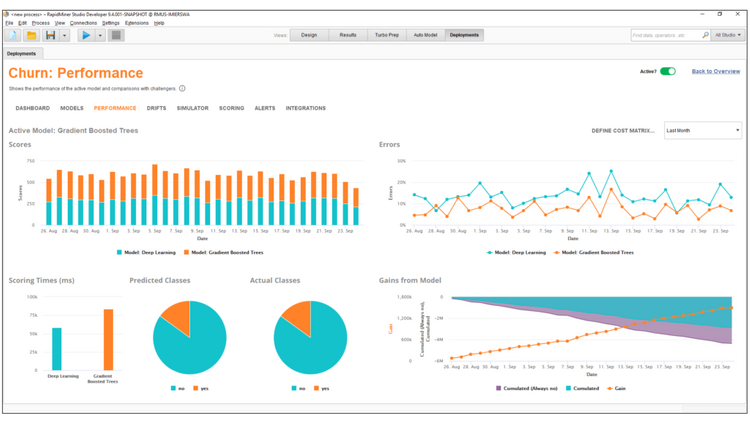The Best Prescriptive Analytics Software
Get the best software for your business. Compare product reviews, pricing below.
Prescriptive analytics is a specific type of business analytics which focuses on using data science to determine the best possible long-term and short-term outcomes of future decisions.
What is Prescriptive Analytics Software?
Prescriptive analytics software is designed to help companies make the best possible business decisions by reviewing historical data to calculate all potential risks and rewards. The software uses complex algorithms to mathematically determine the actionable insights which would most benefit your business moving forward.
Prescriptive analytics software blends different analytical phases into one solution:
- Descriptive analytics: Categorize big data sets into observable groupings for easier studies of your current business assets and procedures
- Predictive analytics: Predict future behavior based on specific data models gathered from the descriptive phase
Often used with business intelligence (BI) tools, this software helps companies plan for the future by analyzing historical data of the past using the latest machine learning. The end goal of this data analytics is to improve long-term decision making in areas which cannot afford human error.
Features of Prescriptive Analytics Software
- Artificial intelligence (AI) and machine learning: Advanced machine learning predicts the best decisions for your company to make
- Resource analysis: Know which resources are available at all times and how they can be best utilized moving forward
- Statistical and predictive modeling: Create different predictive models to predict decision making results in the near-term and long-term future
- Real-time scenarios: Generate performance models based on data gathered from real-time sources
- Data management: Set data sources to account for all your business variables
- Historical data measurement: Analyze different types of historical data to use in making predictions

Prescriptive Analytics Software Benefits
There are many incredible benefits to implementing a prescriptive analytics software at your company:
Make Better Business Decisions
The primary benefit of prescriptive analytics software is to help your company make better business decisions by using machine learning to gather in-depth data analysis. AI algorithms continuously learn about your company in order to determine the right steps to avoid risk and encourage growth.
For example, prescriptive analytics software can determine multiple courses of action based on a single event. This allows you to review all the potential consequences of your decision before you make it. Understanding all the possible risks and rewards gives you better insight into protecting your business and giving you a competitive edge.

Prepare for the Short and Long-Term
Predicting the future is hard, but analytical software certainly helps. Prescriptive analytics helps businesses prepare for the future by reviewing data from the past. Knowing how your business has operated before provides valuable insights into what decisions will work best for continued success.
Of course, certain near-term decisions can have long-lasting impacts. With prescriptive analytics software, you can build out custom models to study the short and long-term probability of different events.
Reduce Human Error
Every business decision you encounter involves some level of risk. Involving human employees in the decision making process increases the chances of mistakes occurring. Even the best data scientists need assistance when reviewing advanced analytics. Prescriptive analytics software aims to minimize these preventable mistakes through its algorithms. The result of machine-based decision making is fewer human errors.
For example, human behavior is incredibly hard to predict. A truck driver taking an extra day off can cause a ripple effect along the supply chain they serve. An algorithm can review all sorts of variables, like vacation schedules, to provide the most likely scenarios to avoid disruptions, whereas a human worker may overlook these important factors before making a decision. Determine the best course of action by using the best data available.
Additionally, prescriptive analytics software protects your company from worst-case scenarios by creating plans for these events. The analytics platform can review all sorts of situations which influence your business processes, from small scale disruptions to global events. Analyze the possible outcomes to find the best solutions.
How is Prescriptive Analytics Different from Predictive Analytics?
As mentioned above, predictive analytics is one of the phases of prescriptive analytics. A standalone predictive analytics software can be used in some situations. For example, if you only need short-term analysis. Meanwhile, a prescriptive analytics solution will include predictive analytics tools, rendering it the more complete software for businesses. However, predictive analytics software is often used as a standalone system within certain contexts, such as smaller companies which only need short-term results.
Additionally, predictive analytics software is aimed more at near-term results. Prescriptive analytics solutions, which are more encompassing in scope, are aimed at balancing long-term and short-term predictions to provide your company with better decision making over time.

